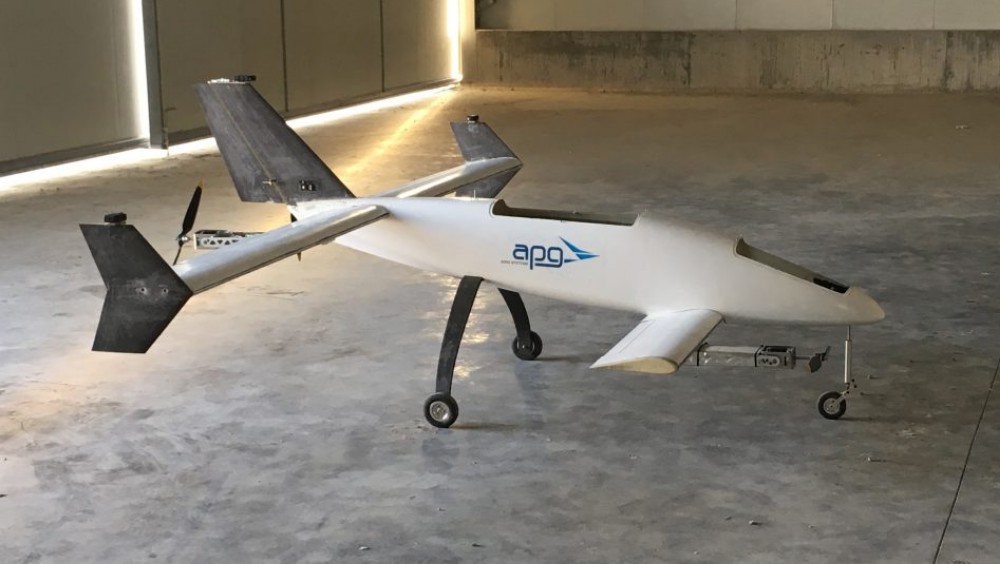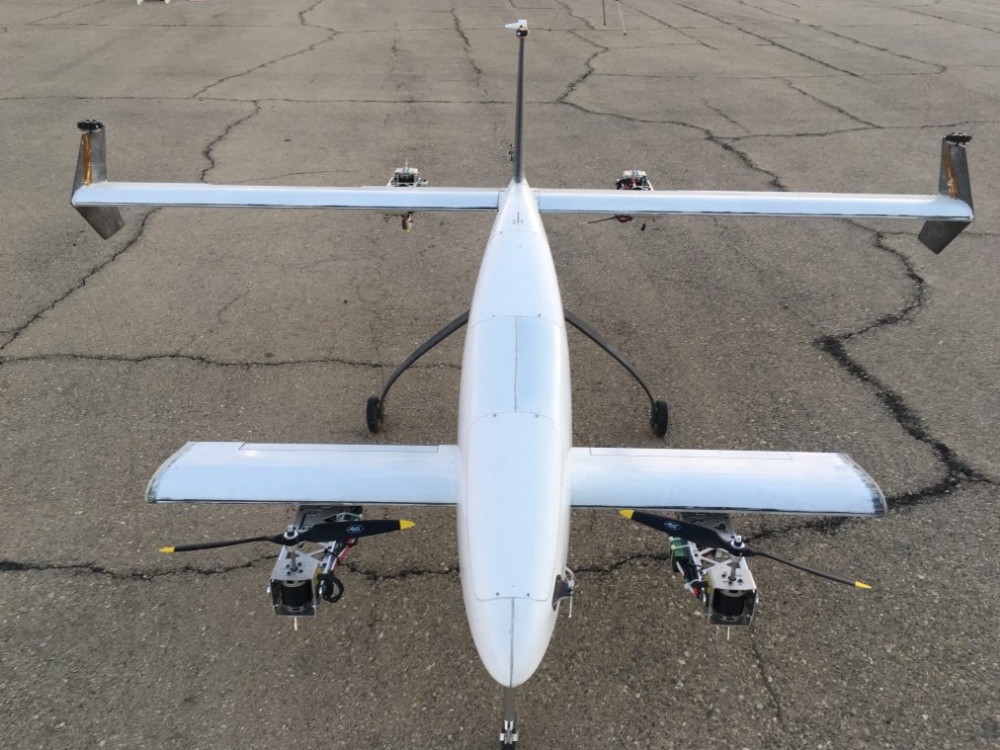Israeli startup APG has unveiled the Peres, an innovative family of UAVs, with breakthrough technology, operations, and logistics. The Peres UAV can fly horizontally and vertically, transitioning from vertical take-off to horizontal flight and from horizontal flight to vertical landing – thanks to APG’s patented feat of engineering.
The Peres can take off and land in a five-meter (16-foot) square area and is among the first systems of its kind with four engines enabling it to transition from horizontal to vertical flight. This design surpasses competing UAVs under development that are shackled by dedicated engines for each flight direction – engines that must be powered on and off – and which greatly limits payload due to their burdensome design.
APG has successfully conducted final flight tests of the Peres 2 in preparation for aviation licensing and regulatory approval. The UAS has a wingspan of more than two meters (seven feet) and a maximum take-off weight (MTOW) of 93 lb. (42 kg). It has endurance of up to eight hours with a payload of 7¼ lb. (3.3 kg), a 93-mile (150 km) mission radius, and a cruising speed of 55 knots at an altitude of 8,000 feet with a service ceiling of 15,000 feet.
To date, Peres 1 and Peres 2 version UASs have been developed, ground-tested and flight-tested. The near-term plan is to design and build Peres models 3 and 4, which will weigh more than 440 lb. (200 kg) and boast flight endurance of 12 hours.
APG CEO Yair Dubester, a former CEO of Israel Aerospace Industries Ltd. UAV division, said,
“We have succeeded in a field where large companies working in this sector have had difficulties. The family of UAVs that we are unveiling will ‘break the market’ because the aircraft in it allow regular flights combined with the option of moving between vertical and horizontal flights while using the same engines.”
Source: Press Release


